columns
columns
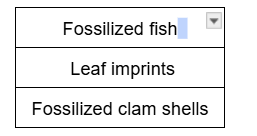
The diagram above shows:
a. series of rock layers.
b. evidence of past life.
Geologists would NOT consider which of the following as major events in Earth’s history?
the extraction of copper from a deposit
An essential part of petroleum formation is:
dead organisms.
Some of Earth’s resources are nonrenewable because:
the processes that formed them occurred over long periods of time.
Is the following statement about water TRUE or FALSE?
"Water collects underground and is sometimes removed and used by people."
TRUE
Of the fossils shown, which one is oldest? 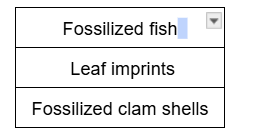
clam
Determining Earth’s history assumes that:
processes that occur today occurred the same way in the past.
Metal ores are often formed near rocks associated with:
volcanic eruptions.
Is the following statements TRUE or FALSE ?
"The distribution of natural resources is changing as a result of human use."
TRUE
Which approach could reduce the impact of human use of natural resources?
development of new technologies.
To determine the time span during which this species of fish lived, you should: 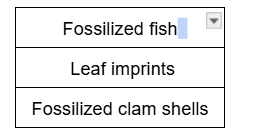
compare these rock layers to similar layers from other locations.
Geologic time periods are divided by:
the appearance and disappearance of certain life forms.
Why are fossil fuels distributed unevenly over Earth’s surface?
organisms died and floated to the bottom of various sea beds around the world.
An example of a property of a natural resource is___________.
how it reacts with acid
Humans have a positive impact on Earth’s systems when they:
recycle large amounts of metals
Studying a series of rock layers provides evidence for which of the following? 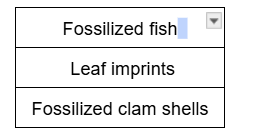
Geologic time scale
Rank the age of these organisms, from oldest to youngest:
Corals, shells, leaves, insects
Which of the following is most related to the distribution of natural resources around the world?
Location of geological processes
TRUE OR FALSE?
"An increasing human population is resulting in fewer resources used per person."
TRUE
Which situation would likely result in the fewest negative consequences to Earth’s systems?
lower population, per capita consumption stays the same
Information from the diagram can be used to determine: 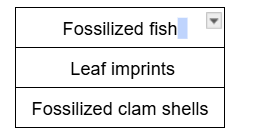
the relative age of events in Earth’s history.
The age of the Earth is closest to ____________ years.
4.6 billion
Determining Earth’s history assumes that:
processes that occur today occurred the same way in the past.
The future availability of natural resources will depend on BOTH A AND B which are human decisions and what else?
geological processes
There are 3 possible consequences of an increased human population....1) more pollution produced and
2) fewer fossil fuels available and ?
less groundwater in aquifers